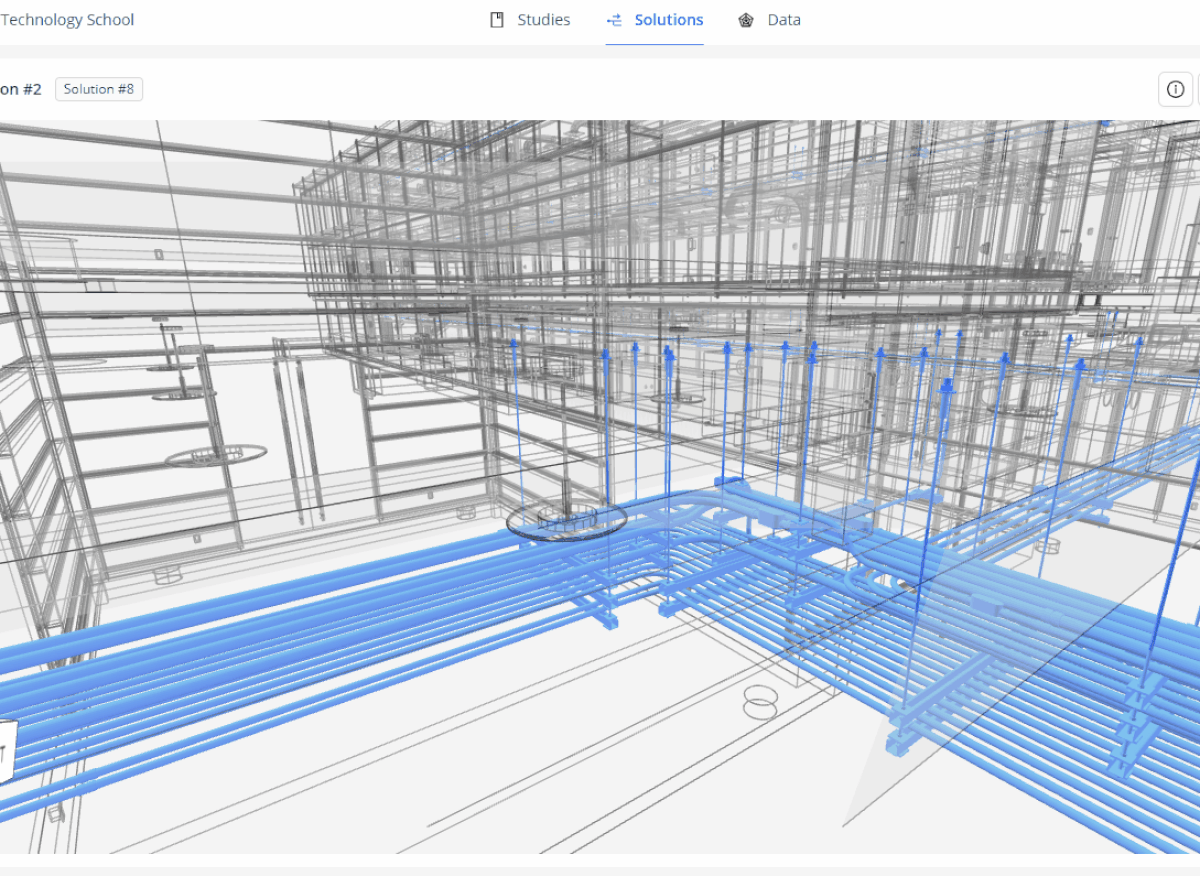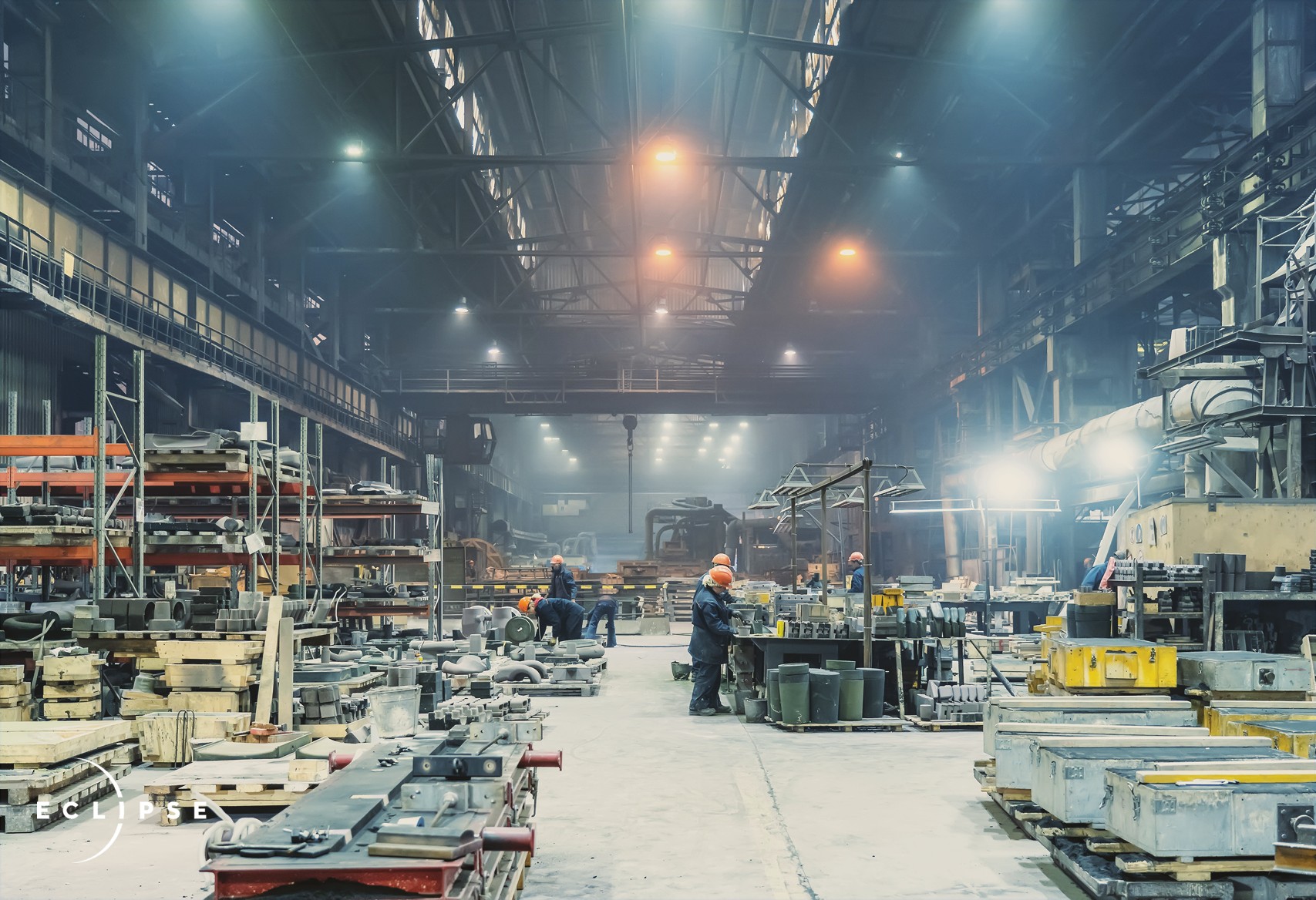By Ryan Gibson, Justin Selig, Charly Mwangi
As seasoned operators in physical industries, Eclipse team members have led the design, manufacturing, and shipment of a wide-range of physical products across our most critical industries. Whether integrating the smallest cellular antennas into smart phones, designing solar panels for large scale energy developments, building the largest skyscrapers, or manufacturing millions of electric vehicles, one thing remains constant: the success of any product in the physical world hinges on the quality of the design process across all domains.
The success of any product in the physical world hinges on the quality of the design process across all domains.
We’ve seen companies crumble during production ramp-up because of unforeseen manufacturing challenges, or inadequate Design for Manufacturing and Assembly (DFMA). Late-stage programs need to start over from scratch because of fatal design flaws and failure to meet performance targets for their customers. These are the catastrophic cases, but what’s far more prevalent — and equally important — is the slow, inefficient, and error-prone design flow spread across dozens of teams, tools, and domains. We've personally felt the pain of legacy processes. It's these problems and traditional design tools that we see ripe for disruption by emerging technologies. In fact, digital transformation in design has started making strides — especially in sectors like construction — where we’ve partnered with industry-leading companies like Augmenta, which uses AI to design building systems.
In this blog post, we'll dive into current process inefficiencies and share our broader thesis on the imminent disruption of the toolchains for physical system design. Additionally, we explore why we believe this shift will spawn new, generational companies as impactful as Ansys, Cadence, Synopsys, and Autodesk have been over the last 30 years.
The Status Quo — Pre-AI
Almost every physical product or project in the world follows the same fundamental design process today.
It begins with project or product teams defining high-level requirements, which are segmented into systems architecture and subsystem requirements by various other stakeholders. These requirements are then handed off to specialized domains with their own design flows (i.e. electrical, mechanical, thermal, etc.). Within each of these design flows, engineers leverage their design instinct and knowhow, along with traditional Computer Aided Design (CAD) and Computer Aided Engineering (CAE) tools to design components or subsystems for further integration, prototyping, or scaled production. There is a constant feedback loop necessary between these engineering domains to ensure integrity of the entire system/product is maintained as well.

Why the Time for Disruption is Now
In recent years, a confluence of factors — including rapid breakthroughs in compute, novel algorithms, digitization and data availability of supply chains, and a growing demand for increasingly complex products — has catalyzed this paradigm change. These factors, collectively, strengthen our conviction that we're on the brink of a significant change in the design toolchain of physical products and projects:
- Technical breakthroughs across the tech stack will lead to high-quality designs at fractions of the cost: the landscape of computing is evolving at a rapid pace across every layer of the tech stack throughout physical industries. From significant enhancements in fundamental computing hardware to the proliferation of novel ML models and neural networks, we're witnessing the emergence of more intelligent design systems than ever before.
Surrogate ML models will make it possible to rapidly screen high-level decisions for feasibility by substituting complex simulations with less computationally-intensive neural networks that model system behavior. Meanwhile, the advent of synthetic data and novel data labeling techniques will make it possible to scale the use of supervised learning ML techniques in ways that were previously limited by availability of training data. With advancements in quantum-inspired approaches in both hardware and software algorithms, we’ll be able to enable faster execution of algorithms like monte-carlo simulation. And, finally, new ML algorithms and approaches to data representation make it possible to explore larger combinatorial search spaces. - Digitization of supply chains will improve design integration: we see this in action within our full-stack portfolio companies, such as VulcanForms and Bright Machines, offering digital manufacturing and assembly fabrics to provide customers with accurate cost-of-production for producing metal parts and product assembly, respectively. Even more broadly, we’re seeing every part of our oldest-line industries experiencing supply chain digitization with companies like Kojo (for construction), CogBase (for semi-custom parts), Flexport (logistics and freight), and Digikey (electronics), enabling an explosion of supply chain data to feed into the design phases.
- There's an increasing need for high-mix, low-volume production manufacturing: products in this world are increasingly becoming more customizable with more complex parts, from electronics to medical devices to cars to homes. Customers want to be able to tailor preferences to their needs. This has resulted in a widely recognized rise in high-mix, low-volume production. This also means decades-old tools can’t support the pace at which many consumer products are evolving. New entrants like Reframe Systems are already leveraging design automation, modular components, and digital manufacturing to scale customizable, net-zero homes.

Where the Opportunities Lie
When thinking about where disruption can happen, there are multiple dimensions that startups can use to focus their efforts, such as engineering disciplines (electrical, mechanical, etc.), components vs. systems, and manufacturing methods. And while focus is key, it's also important to be mindful of the trade-off between investing resources in enhancing the depth of generative design quality within a specific scope versus widening the generative design scope.
Ultimately, as startups find their focus and develop their next-gen platforms, they will need to prioritize and measure the value created in the design process. We use a simple framework to think about value creation; design quality, and design process cost. Design quality encompasses design performance, manufacturing cost, and lead-time. Over time, we believe next-gen tools will surpass what we call the “economic human limit,” the limit to design quality achievable by a human engineer, across all dimensions. Design process cost consists of both the direct engineering costs (i.e. wages, prototypes, etc.) and the length of the design process (which appears as direct overhead costs and opportunity cost). We see a huge potential for value creation here. For example, in construction, the detailed modeling of building subsystems can be so time-consuming that the majority of projects are not modeled. As a result, developers incur additional costs later in the project lifecycle when they encounter design issues that should have been identified earlier. In the future, high performance, detailed designs will be generated near-instantly.
Shape the Future of Physical World Design
We envision a future where generative systems will handle the bulk of manual product design tasks. Engineers and designers will eventually transition from juggling between CAD, simulation/test, and DFM teams to reviewing and selecting generated solutions, tuning input parameters, and optimizing the system-level. In essence, they'll move from manually managing processes to guiding outcomes.
We foresee a future where generative systems will handle the bulk of manual design tasks.
As this paradigm reaches each engineering domain, this shift will drastically decrease design timelines, increase design quality, and enable early, accurate understanding of the cost of production and viability. This will happen at both component (bottoms-up) and assembly levels (top-down), ultimately converging to end-to-end optimization.

We’ve barely scratched the surface of revolutionizing the way we design our physical world. The traditional design flow dominant over the last few decades is on the cusp of disruption, where powerful systems will instead intelligently pull together deep physics, supply chain, manufacturing, and best-practices knowledge to generate valuable designs. We’re excited about this future world, its potential to improve the physical things in our daily lives, and the generational businesses which will define the engineering tools of the 21st century.
If you want to build this future together, reach out to Ryan, Justin or Charly.
Follow Eclipse on LinkedIn for the latest on the Industrial Evolution.
Related Articles

Bits Behind Atoms: Using AI to Design Building Systems
Read More
Defining Modern Space Security: Even Rogers, Co-Founder and CEO, True Anomaly
Read More
Fortune’s Most Powerful Women: Finding Success During Economic Turbulence
Read More
